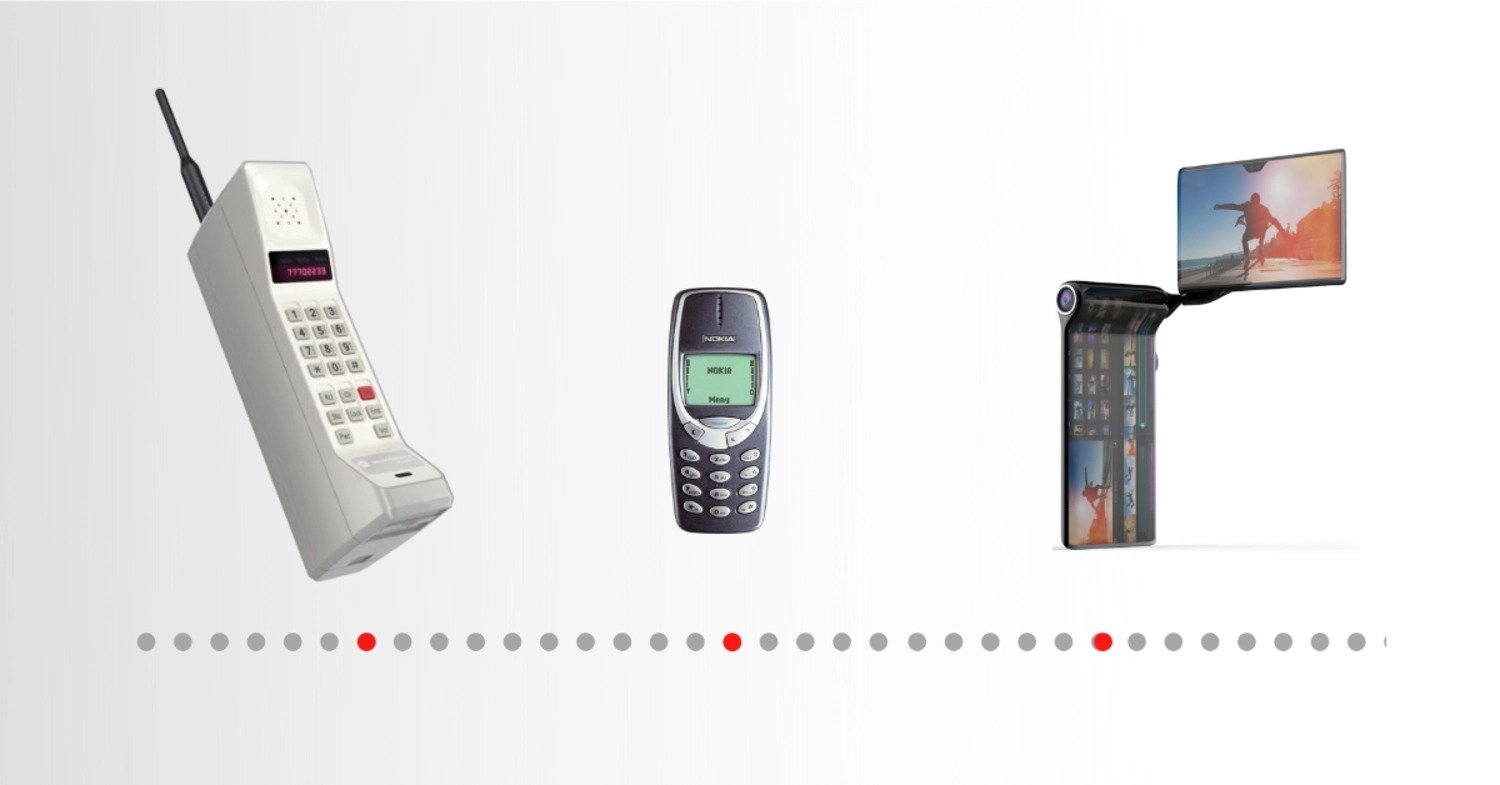Introduction
Over the past few decades, the world of mobile communication has experienced remarkable advancements. From the advent of basic cellular networks to the introduction of high-speed internet on our smartphones, we have witnessed a rapid evolution in technology. One such significant milestone was the launch of the fourth-generation mobile network, commonly known as 4G.
4G revolutionized mobile communications by providing faster internet speeds and improved reliability compared to its predecessor, 3G. It enabled seamless video streaming, quicker downloads, and enhanced user experience for a generation of smartphone users. However, as with any technological innovation, there comes a time when newer, more advanced technologies emerge, leading to the inevitable question: when will 4G stop working?
To understand the future of 4G, it is essential first to grasp its significance and the developments that have taken place in mobile networks. So, let’s dive into the world of mobile connectivity and explore the timeline for the potential phasing out of 4G.
What is 4G?
4G, short for the fourth generation, is a mobile network technology that revolutionized the way we connect and communicate. It provided users with faster internet speeds, improved network capacity, and a more reliable connection compared to its predecessor, 3G.
One of the key features of 4G is its ability to transmit data at high speeds. It enabled users to download files, stream videos, and browse the internet seamlessly, offering a significant upgrade from the previous generation. With 4G, users could enjoy a smoother online experience, making it ideal for activities that require a high bandwidth, such as video conferencing or online gaming.
Furthermore, 4G networks introduced lower latency, the time it takes for data to travel between devices and servers. This reduction in latency meant faster response times, allowing for real-time interactions and better user experiences for applications like video chats, live streaming, and online transactions.
Another advantage of 4G is its improved network capacity. With the growing number of smartphones and connected devices, 4G provided a more efficient and scalable solution, handling higher data demand without sacrificing performance. It allowed for increased network stability and reduced congestion, ensuring a stable connection even in densely populated areas or during peak usage times.
Overall, 4G has become the standard for mobile communication, empowering users with fast and reliable connectivity. As the backbone of our digital lives, it enables us to stay connected, access information, and enjoy a wide range of services while on the go.
The Evolution of Mobile Networks
Mobile networks have undergone a remarkable transformation since their inception. The journey began with the first-generation mobile network, commonly known as 1G, which introduced analog voice transmission. However, 1G lacked data capabilities and suffered from limitations in voice quality and network coverage.
The second-generation, or 2G, networks marked a significant leap forward by introducing digital communication. This paved the way for more efficient voice calls, improved network capacity, and basic data services such as text messaging. With the advent of 2G, mobile phones started to become more accessible to the masses, propelling the global adoption of mobile technology.
Building upon the success of 2G, the third-generation, or 3G, networks brought about a revolution in mobile connectivity. 3G networks enabled users to access the internet on their mobile devices, offering higher data speeds and multimedia capabilities. This opened up new possibilities for communication, entertainment, and business, as users could now browse the web, send emails, and download files on the go.
However, it was the launch of the fourth-generation, or 4G, networks that truly transformed the mobile landscape. With significantly faster data speeds and enhanced network capacity, 4G unlocked the full potential of mobile internet. It enabled seamless video streaming, high-quality VoIP calls, and improved overall user experience. The widespread adoption of smartphones and the explosion of data-hungry applications and services necessitated the need for a more advanced network infrastructure.
4G networks utilized advanced technologies such as Long Term Evolution (LTE) to deliver faster data speeds and lower latency. LTE allowed for efficient use of available spectrum and enabled service providers to support the growing demand for mobile data. As a result, users experienced faster download and upload speeds, smoother streaming, and improved network stability.
With the evolution of mobile networks, users have witnessed a paradigm shift in how they connect and engage with the digital world. From basic voice calls to high-speed internet access and a multitude of online services, mobile networks have played a crucial role in enabling communication, innovation, and connectivity across the globe.
The Arrival of 5G
The arrival of the fifth-generation, or 5G, network technology has generated significant buzz and excitement among technology enthusiasts, industry experts, and consumers alike. Promising lightning-fast speeds, ultra-low latency, and massive device connectivity, 5G is set to revolutionize the way we connect and interact with the digital world.
Unlike its predecessors, 5G is not just an incremental upgrade but a paradigm shift in mobile network technology. It introduces new radio frequencies, advanced network architectures, and innovative features that will unlock a multitude of possibilities across various industries.
One of the main advantages of 5G is its unparalleled speed. With peak data rates projected to reach up to 10 gigabits per second (Gbps), 5G networks are expected to be at least 10 times faster than 4G. This means that users will be able to download files, stream high-definition videos, and access bandwidth-intensive applications in a fraction of the time it currently takes.
Another key feature of 5G is its ultra-low latency. Latency refers to the time it takes for data to travel from one point to another. With 5G, latency is expected to be reduced to mere milliseconds, enabling real-time interactions without noticeable delays. This will have a profound impact on applications that require instant responsiveness, such as autonomous vehicles, remote surgery, and augmented reality.
Furthermore, 5G networks have the capacity to connect a massive number of devices simultaneously. This opens up new possibilities for the Internet of Things (IoT) ecosystem, where billions of interconnected devices seamlessly communicate and share data. From smart cities and intelligent transportation systems to connected homes and wearable devices, 5G will enable a more connected and digitized world.
Although 5G holds immense promise, its deployment is a complex undertaking. It requires significant infrastructure upgrades, including the installation of new base stations and the optimization of existing networks. Moreover, the full benefits of 5G will only be realized with the expansion of coverage and the availability of compatible devices.
As 5G networks continue to roll out worldwide, we can expect it to reshape industries, enable innovative applications, and transform the way we live and work. From faster internet speeds to groundbreaking advancements in technology, the arrival of 5G heralds a new era of connectivity and possibilities.
The Coexistence of 4G and 5G
With the advent of 5G networks, there is a natural question about the coexistence of 4G and 5G. Will 4G become obsolete overnight, or will it continue to play a vital role in our mobile communication landscape?
The reality is that 4G and 5G will coexist for the foreseeable future. While 5G offers tremendous advancements in terms of speed, latency, and device connectivity, it will take time for it to achieve widespread coverage and adoption. This means that 4G will continue to serve as a reliable and widely available option for mobile communication.
There are several reasons why 4G will remain relevant even as 5G networks proliferate. Firstly, 4G networks have already been established and deployed extensively across the globe. The infrastructure is in place, and millions of devices are currently compatible with 4G networks. Upgrading the entire infrastructure and replacing all existing devices would be a massive undertaking that will take time to complete.
Secondly, 5G coverage will initially be limited to certain areas, such as densely populated cities and urban centers. Rural areas and less developed regions may continue to rely on 4G networks for their mobile communication needs. This is because the deployment of 5G in remote areas may be more challenging and cost-prohibitive.
Thirdly, not all mobile devices will immediately support 5G. Users with older smartphones or devices that lack 5G compatibility will still need access to reliable connectivity. Therefore, 4G networks will continue to cater to these users until they upgrade to 5G-capable devices.
Moreover, 4G will play a crucial role in providing a fallback option for 5G. In cases where 5G coverage is limited or signal strength is weak, devices will seamlessly switch to 4G networks to maintain a stable and consistent connection. This ensures a smooth user experience and uninterrupted connectivity, even in areas where 5G penetration is not yet optimal.
It is important to note that the coexistence of 4G and 5G does not imply that 4G will remain stagnant. Service providers will continue to upgrade and enhance 4G networks to improve coverage, capacity, and performance. This will ensure that users without access to 5G can still enjoy reliable and fast connectivity.
In summary, while 5G is the future of mobile communication, 4G will continue to play a crucial role in our connected world. The coexistence of the two networks will provide flexibility, reliability, and accessibility, ensuring that users can stay connected regardless of their location or device compatibility.
Factors That Will Influence the Transition
The transition from 4G to 5G is not a simple switch but a complex process influenced by various factors. Several key elements will shape the pace and extent of this transition:
- Infrastructure Development: The deployment of 5G requires significant infrastructure development, including the installation of new base stations and the upgrading of existing network equipment. The availability and accessibility of this infrastructure will greatly influence the adoption of 5G in different regions.
- Device Compatibility: The availability of 5G-capable devices is crucial for the transition. As more smartphones, tablets, and other connected devices support 5G, users will have the option to upgrade and take advantage of the new network technology. Device manufacturers and service providers play a key role in driving this transition by making affordable and diverse 5G devices accessible to consumers.
- Regulatory Environment: The regulatory environment plays a significant role in the deployment of 5G. Governments and regulatory bodies need to allocate spectrum, establish standards, and ensure a conducive regulatory framework to facilitate the smooth transition to 5G. Collaborative efforts between stakeholders at national and international levels are crucial to overcome regulatory challenges and promote innovation in the 5G ecosystem.
- Investment and Business Models: Deploying 5G networks requires substantial investment from network operators. The development of sustainable and viable business models is essential to incentivize these investments. Revenue generation opportunities, cost structures, and return on investment calculations will heavily influence the pace of 5G deployment and the transition from 4G.
- User Demand and Expectations: User demand and expectations also play a significant role in the transition. As consumers become increasingly aware of the potential benefits of 5G, their desire for faster speeds, lower latency, and enhanced connectivity will drive the demand for 5G services. Meeting and exceeding these consumer expectations will be a crucial factor in the successful adoption of 5G.
It is important to recognize that the transition from 4G to 5G will not happen overnight. The timeline and extent of the transition will vary across regions and depend on the interplay of these influencing factors. However, as technology continues to evolve, and these factors align, the transition to 5G will gain momentum, ultimately reshaping the way we connect, communicate, and interact with the world around us.
When Will 4G Start Phasing Out?
The phasing out of 4G will largely depend on the pace of 5G deployment, adoption, and the market dynamics. While it is challenging to provide an exact timeline, several factors can help us understand when 4G might start phasing out:
- 5G Coverage Expansion: As 5G networks continue to expand their coverage, covering a significant portion of the population and geographic areas, the need for 4G will gradually diminish. Once 5G becomes widely available, users will naturally transition to the new network technology, reducing the reliance on 4G networks.
- Device Adoption: The adoption of 5G-capable devices will play a crucial role in determining the pace of 4G phase-out. As more users upgrade to 5G smartphones, tablets, and other connected devices, the demand for 4G services will decline. Once the majority of devices in use are 5G-compatible, service providers may decide to allocate more resources to enhance the 5G network and reduce investment in 4G infrastructure.
- Market Demand: Market demand for faster speeds, lower latency, and more advanced capabilities will also influence the phase-out of 4G. As consumer expectations evolve, the demand for 5G services will increase, prompting service providers to prioritize the development and deployment of 5G networks. In response to this demand, they may gradually shift resources away from 4G to focus on improving and expanding 5G infrastructure.
- Technology Obsolescence: Over time, as technology advances and new applications and services require the capabilities of 5G, the limitations of 4G will become more apparent. As a result, service providers may choose to phase out 4G to allocate resources to newer and more efficient network technologies. Technological advancements, coupled with the increasing pace of innovation, may eventually make 4G obsolete.
It is important to note that the phase-out of 4G will likely occur gradually rather than abruptly. Service providers will need to ensure a smooth transition for users by maintaining backward compatibility and offering reliable connectivity for devices that are not yet 5G-compatible. 4G will continue to serve as a fallback option in areas without 5G coverage or for devices that have not been upgraded, ensuring uninterrupted connectivity for all users.
While it is challenging to predict an exact timeline for the phase-out of 4G, it is safe to say that the process has already begun in some areas. As 5G networks become more prevalent, and technological advancements continue, the transition from 4G to 5G will gradually become more pronounced, leading to the eventual retirement of 4G networks.
The Timeline for 4G Shutdown
As 5G continues to be deployed and adopted worldwide, the question arises: what will be the timeline for the shutdown of 4G networks? While it is challenging to provide a definitive timeline, we can anticipate a phased approach to the gradual shutdown of 4G. Here is a general outline of the potential timeline:
- Initial Phase: In the early stages of 5G deployment, 4G networks will still be vital for providing widespread and reliable connectivity. The focus will be on expanding 5G coverage and ensuring seamless coexistence between the two networks. During this phase, service providers will continue to invest in maintaining and optimizing 4G infrastructure to meet the needs of existing users.
- Mid-Phase Transition: As 5G networks reach a level of maturity and coverage, the transition from 4G to 5G will start to gain momentum. Service providers will gradually shift their focus and resources towards expanding and enhancing the 5G infrastructure. This phase will coincide with the increasing adoption of 5G-capable devices, leading to a gradual decline in 4G usage.
- Advanced Adoption: In this phase, 5G networks will become the primary mode of mobile communication for a significant portion of the population. The demand for 4G services will diminish, and service providers may start to reallocate resources from 4G to further improve the 5G infrastructure. However, 4G networks will still play a supporting role, ensuring backward compatibility and providing a fallback option for users and devices that have not yet transitioned to 5G.
- Final Phase and Shutdown: The final phase will see a significant decline in 4G usage as users and devices fully transition to 5G. At this point, service providers may make the strategic decision to shut down 4G networks in favor of maximizing resources for 5G. The timeline for the complete shutdown of 4G will depend on factors such as user demand, market dynamics, and technological advancements. It is likely to be a gradual process, ensuring a smooth transition and uninterrupted connectivity for all users.
It is important to note that the timeline for the shutdown of 4G will vary across regions and depend on the pace of 5G deployment and adoption. Additionally, service providers will need to consider the needs of users who may still rely on 4G networks due to device compatibility or limited 5G coverage.
While we cannot predict an exact timeline for the shutdown of 4G networks, it is evident that 5G is the future of mobile communication. As the demand for faster speeds, lower latency, and enhanced connectivity continues to grow, the transition from 4G to 5G will become inevitable, leading to the eventual shutdown of 4G networks.
Implications for Consumers and Businesses
The transition from 4G to 5G networks will have significant implications for both consumers and businesses. Here are some of the key implications:
- Enhanced Connectivity: 5G networks will provide consumers and businesses with faster and more reliable connectivity. Consumers will experience seamless streaming, quicker downloads, and enhanced mobile gaming experiences. Businesses will benefit from improved efficiency in remote collaboration, real-time data analysis, and IoT applications.
- New Possibilities: The increased speeds and low latency of 5G will unlock new possibilities in various industries. Consumers can expect advancements in virtual reality (VR), augmented reality (AR), and immersive media experiences. Businesses can explore innovative applications such as autonomous vehicles, smart cities, and telemedicine, creating new opportunities for growth and transformation.
- Technological Advancements: 5G will drive technological advancements across industries. The demand for faster and more efficient networks will accelerate the development of cutting-edge technologies and solutions. Cloud computing, edge computing, and artificial intelligence (AI) will be further empowered, enabling businesses to harness their full potential and deliver innovative products and services.
- New Business Models: The advent of 5G will spur the creation of new business models. Industries such as e-commerce, entertainment, and healthcare will experience transformational changes. Consumers will benefit from personalized and immersive experiences, while businesses will have opportunities to innovate and evolve their offerings to meet the evolving demands of consumers in a 5G-driven world.
- Increased IoT Adoption: The deployment of 5G will significantly boost the Internet of Things (IoT) ecosystem. The ability of 5G networks to handle massive device connectivity and provide low-latency communication will accelerate IoT adoption across industries. Smart homes, connected cars, and smart cities will become more commonplace, contributing to increased efficiency, convenience, and sustainability.
- Challenges and Security Considerations: The transition to 5G networks will bring new challenges and security considerations. With increased connectivity and reliance on networks, the risk of cyber threats and data breaches may also increase. It will be crucial for consumers and businesses to prioritize cybersecurity measures to safeguard sensitive data and ensure a secure digital environment.
Overall, the transition from 4G to 5G represents a significant leap forward in mobile communication technology. Consumers will experience faster speeds, smoother streaming, and the ability to connect with a wide range of devices. For businesses, 5G opens up new avenues for innovation, efficiency, and growth. As 5G networks continue to expand and mature, consumers and businesses alike can expect a more connected, immersive, and technologically advanced future.
Conclusion
The transition from 4G to 5G networks signifies a monumental shift in mobile communication technology. With the promise of faster speeds, low latency, and massive device connectivity, 5G is set to reshape the way we connect and interact with the digital world. However, the process of phasing out 4G and fully transitioning to 5G will take time and depend on various factors.
While 5G networks continue to be deployed and adopted globally, 4G will remain an essential part of our mobile communication landscape. The coexistence of these networks will ensure widespread connectivity and provide a fallback option for areas with limited 5G coverage or devices that have not yet transitioned to 5G.
The timeline for the shutdown of 4G networks will be influenced by factors such as the expansion of 5G coverage, device adoption, market demand, and technological advancements. It will be a gradual process, ensuring a smooth transition and uninterrupted connectivity for all users.
Consumers and businesses can expect significant implications from the transition to 5G. Enhanced connectivity, new possibilities in various industries, technological advancements, and the emergence of new business models are just some of the areas that will experience transformation. With increased IoT adoption and innovation driven by 5G, consumers and businesses will benefit from personalized experiences, efficiency gains, and a more connected and technologically advanced world.
As the 5G journey unfolds, it is important for stakeholders to collaborate, adapt to the evolving technological landscape, and address the challenges and security considerations that arise. By leveraging the potential of 5G, we can embark on a new era of connectivity and innovation, shaping the future of mobile communication and paving the way for a digitally connected world.

























